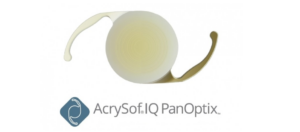The Ins and Outs of Refractive Lens Exchangein Boston, MA

Ever considered an alternative to wearing glasses or contacts? These days, vision correction procedures like LASIK are both popular and effective.
But LASIK isn’t the only vision correction procedure out there. It’s great for adults with nearsightedness, farsightedness, and astigmatism.
One of the things that LASIK can’t correct is any future eye conditions, including presbyopia or cataracts. Presbyopia is an age-related condition that occurs when the natural lens of the eye loses its flexibility.
When the lens isn’t as flexible, it becomes harder to focus and see things up close. Many adults who are over the age of 40 suffer from presbyopia and have to use reading glasses.
The good news is that another laser vision correction procedure exists called Refractive Lens Exchange (RLE) that can correct presbyopia. Keep reading to learn the ins and outs of Refractive Lens Exchange!
What is Refractive Lens Exchange?

Refractive Lens Exchange is a minimally-invasive procedure that replaces the eye’s natural lens with an artificial lens. The artificial lens is called an intraocular lens.
RLE and cataract surgery are almost identical procedures, except that during Refractive Lens Exchange, there is no cloudy lens to remove. Instead, the lens is still clear because many people choose to undergo RLE as a preemptive way to avoid needing cataract surgery.
By getting Refractive Lens Exchange, you’ll never get cataracts or need cataract surgery later on in life. Cataracts can only form on natural lenses, not on artificial ones.
IOLs can’t develop cataracts. If you want to correct your vision and not worry about getting cataracts as you get older, RLE is a great option!
Which IOL Should You Choose Before Having Refractive Lens Exchange?
There are several different varieties of IOLs available. Although any intraocular lens you choose will correct your vision, the type you decide on will determine the correction level.
Most IOLs will correct presbyopia, although some may work well for extreme farsightedness. Some will even correct for both presbyopia and astigmatism at the same time if you choose a lens with a toric model.
If you go with a premium lens option, you may be able to reduce your dependence on glasses while improving your near, intermediate, and distance vision. With many premium lenses, like the trifocal IOL, you could end up with the best sight of your life, including before you had cataracts!
It’s necessary to do your research and fully understand all of your options before selecting an IOL. This will ensure that you’re satisfied after having Refractive Lens Exchange.
Are you tired of needing to wear reading glasses for most activities? An extended depth of focus (EDOF) premium lens may be a good choice.

Do you spend a lot of time in front of the computer, either for work or recreationally? You may be a good fit for a trifocal lens, which will give you excellent distance vision without sacrificing any of your intermediate or up-close vision.
Choosing an IOL may feel overwhelming at first, but your eye doctor will help you find an IOL that works for you based on your unique visual needs when you come in for a Refractive Lens Exchange evaluation.
What is Getting Refractive Lens Exchange Like?
Refractive Lens Exchange is a minimally invasive, low-risk procedure. It’s performed as an outpatient procedure, meaning you get to go home the same day you undergo it.

Only one eye is treated at a time, with each treatment spaced a few weeks apart. While you have to be awake during Refractive Lens Exchange, the procedure is quick and painless thanks to local anesthetics and drops.
You’ll first receive a local anesthetic, followed by numbing eye drops. After blinking a few times, the numbing solution spreads over the surface of your eye and renders it numb so you won’t feel any pain during the procedure.
Your surgeon will then make a small incision in your eye, allowing them to see what’s going on inside your eye. After creating the incision, your surgeon uses a device called an emulsifier.
They insert this into your eye and use it to remove your natural lens. The broken pieces are then removed. Finally, your surgeon will insert the IOL through the same incision.
The artificial lens starts folded and then unfurls into place, where it’s aligned behind the iris. The incision doesn’t require any sutures and closes up on its own as the eye heals.
While you will be able to go home after your RLE procedure is over, you will need to have someone drive you as your eye will be more sensitive. The best thing you can do once you get home is rest for the rest of the day.
For the first few days, as you’re recovering after having Refractive Lens Exchange, you may feel some minor discomfort, but taking prescribed eye drops and other medications should help your eye heal quickly. Most people can resume normal activities in the week following surgery, but you should follow your eye doctor’s post-surgical instructions carefully and avoid any strenuous activity.

Once one eye has healed, you can treat the next eye. The procedure is the same for both eyes and is as quick and easy to recover from the second time!
The Best Refractive Lens Exchange Candidates

RLE is best for patients with presbyopia, severe farsightedness, or mild astigmatism. The procedure can also correct nearsightedness, but another laser vision correction procedure like LASIK is usually a far more effective treatment.
To have any eye surgery, including Refractive Lens Exchange, you should be in good health without any pre-existing eye conditions that make it hard for your eyes to heal. But if you are in generally good health, over the age of 40, struggle with presbyopia, and don’t have cataracts, RLE is a great way to correct your vision and ensure you remain cataract-free.
Are you wondering if Refractive Lens Exchange could be the right vision correction procedure for you? Schedule an appointment at Nielsen Eye Center in Boston, MA, with one of our excellent ophthalmologists to learn more about if RLE could be a good fit for you!
Our Patient Advocates are by the phone, waiting for you to call with any questions! Give us a call at 617-471-5665 and find out more about this incredible procedure!



